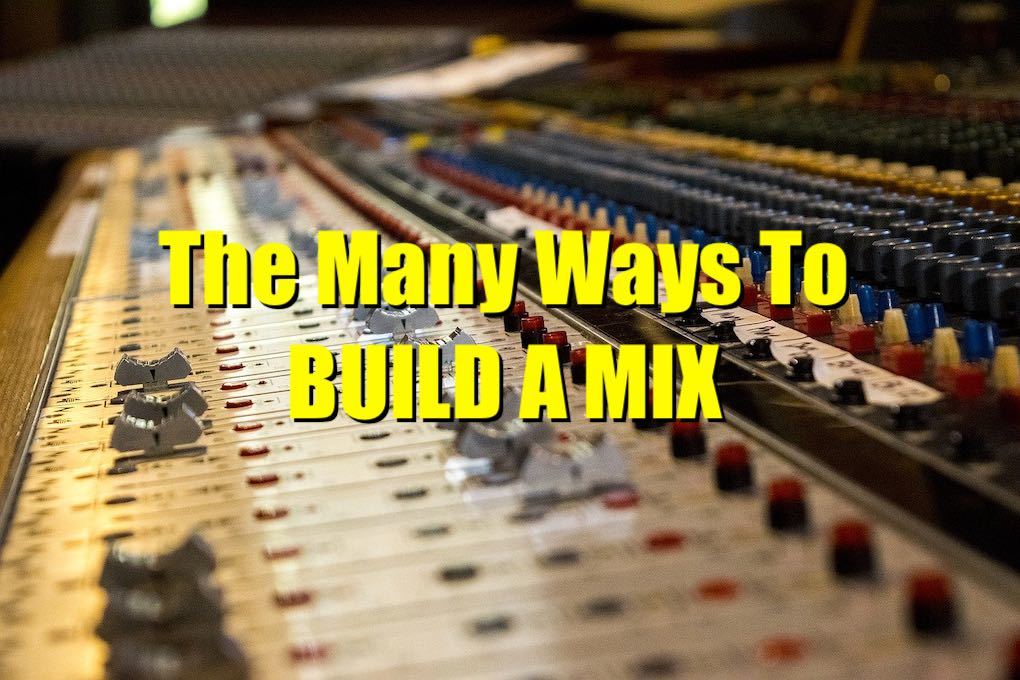- in Book Excerpt , Production by Bobby Owsinski
The Many Ways To Build A Mix

Despite what you might think, there is no standard mix element to start and build a mix from. Modern mixers employ various techniques and they’re all valid, especially in different genres of music. For instance, here are the places from which a mix can be started:
- From the Bass
- From a loop
- From the Kick Drum
- From the Snare Drum
- From the Drum Overheads
- From the Lead Vocal or main instrument
- With all of the instruments and vocals in right from the beginning
- When mixing a string section, from the highest string (violin) to the lowest (bass)
There are some mixers that just push up all the faders and mix with everything in the mix from the beginning. The theory here is that everything will eventually be in the mix anyway, you might as well start with it all in as soon as you can. The advantage to this method is that by hearing all the instruments, loops, and vocals, you’re able to make an aural space in the mix for everything. If you insert one mix element at a time, you begin to run out of space for the lead element (usually the vocal) so it never sits at the right level in the track. When that happens, you might have to go back to the beginning to make sure everything fits together properly.
What’s The Genre?
The type of program being mixed will frequently have an effect on where you build the mix from. For instance, when mixing dance music where the kick is everything, that’s the obvious choice for a starting point. Mixing an orchestra, however, requires a different technique. According to orchestral mixer Don Hahn, “The approach is totally different because there’s no rhythm section, so you shoot for a nice roomy orchestral sound and make it as big a sound as you can get with the amount of musicians you have. You start with violins, then violas if you have them, cellos, then basses. You get all that happening and then add woodwinds, French horns, trombones, trumpets, and then percussion.”
In jazz, the melody instrument can be the starting point with the bass inserted shortly after to solidify the foundation and the root of the chord changes. Early pop and rock engineers started with the bass and built around that, although that’s pretty much changed to the kick drum these days.
It’s All About The Lead Mix Element
Wherever you start from, it’s generally agreed that it’s a good idea for the vocal, or whatever is the most prominent or significant melody mix element, to make its entrance into the mix as soon as possible. The reason for this is twofold. First of all, the vocal is probably going to be the most important element, so it will need to take up some of the frequency space that already may be assigned to other supporting instruments. If you wait until late in the mix to put the vocal in, there may not be enough space left, and the vocal will never sit right with the rest of the track.
The second reason has to do with effects. If you tailor all of your effects to the rhythm section and supporting instruments, there may be none left when it’s time to add in the vocal or most prominent instrument.
You can read more from The Mixing Engineer’s Handbook and my other books on the excerpt section of bobbyowsinski.com.

